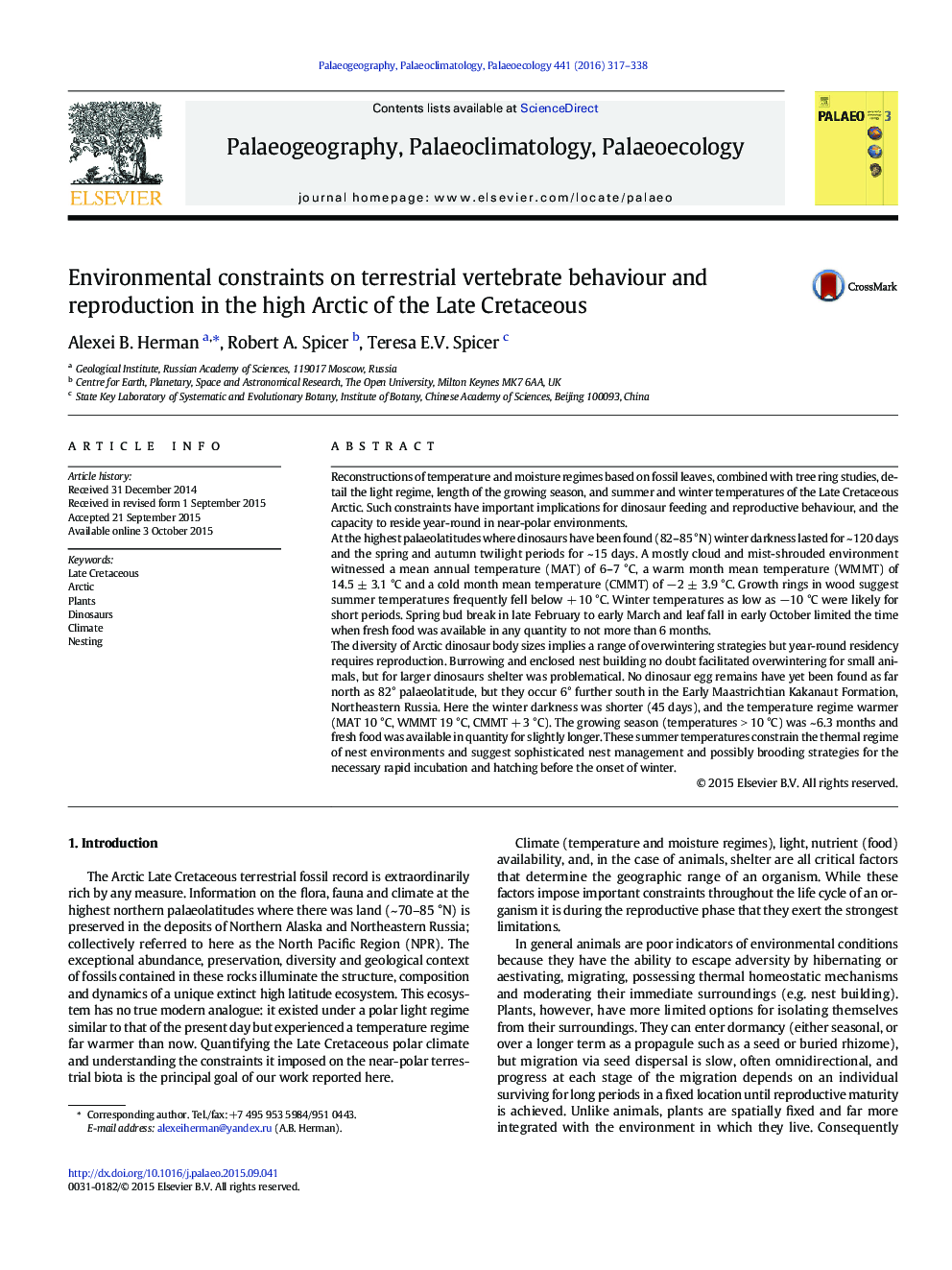| کد مقاله | کد نشریه | سال انتشار | مقاله انگلیسی | نسخه تمام متن |
|---|---|---|---|---|
| 4465825 | 1313950 | 2016 | 22 صفحه PDF | دانلود رایگان |
• Late Cretaceous high Arctic vegetation and climates are described and quantified.
• Climate and light regimes are used to determine times of leaf bud break and leaf fall.
• Large dinosaur migration distances to avoid freezing could have been less than 600 km.
• Reproduction is needed for permanent residency: egg incubation environments discussed.
• Ambient palaeoconditions suggest brooding and/or sophististicated nest management.
Reconstructions of temperature and moisture regimes based on fossil leaves, combined with tree ring studies, detail the light regime, length of the growing season, and summer and winter temperatures of the Late Cretaceous Arctic. Such constraints have important implications for dinosaur feeding and reproductive behaviour, and the capacity to reside year-round in near-polar environments.At the highest palaeolatitudes where dinosaurs have been found (82–85 °N) winter darkness lasted for ~ 120 days and the spring and autumn twilight periods for ~ 15 days. A mostly cloud and mist-shrouded environment witnessed a mean annual temperature (MAT) of 6–7 °C, a warm month mean temperature (WMMT) of 14.5 ± 3.1 °C and a cold month mean temperature (CMMT) of −2 ± 3.9 °C. Growth rings in wood suggest summer temperatures frequently fell below + 10 °C. Winter temperatures as low as −10 °C were likely for short periods. Spring bud break in late February to early March and leaf fall in early October limited the time when fresh food was available in any quantity to not more than 6 months.The diversity of Arctic dinosaur body sizes implies a range of overwintering strategies but year-round residency requires reproduction. Burrowing and enclosed nest building no doubt facilitated overwintering for small animals, but for larger dinosaurs shelter was problematical. No dinosaur egg remains have yet been found as far north as 82° palaeolatitude, but they occur 6° further south in the Early Maastrichtian Kakanaut Formation, Northeastern Russia. Here the winter darkness was shorter (45 days), and the temperature regime warmer (MAT 10 °C, WMMT 19 °C, CMMT + 3 °C). The growing season (temperatures > 10 °C) was ~ 6.3 months and fresh food was available in quantity for slightly longer. These summer temperatures constrain the thermal regime of nest environments and suggest sophisticated nest management and possibly brooding strategies for the necessary rapid incubation and hatching before the onset of winter.
Figure optionsDownload high-quality image (155 K)Download as PowerPoint slide
Journal: Palaeogeography, Palaeoclimatology, Palaeoecology - Volume 441, Part 2, 1 January 2016, Pages 317–338
